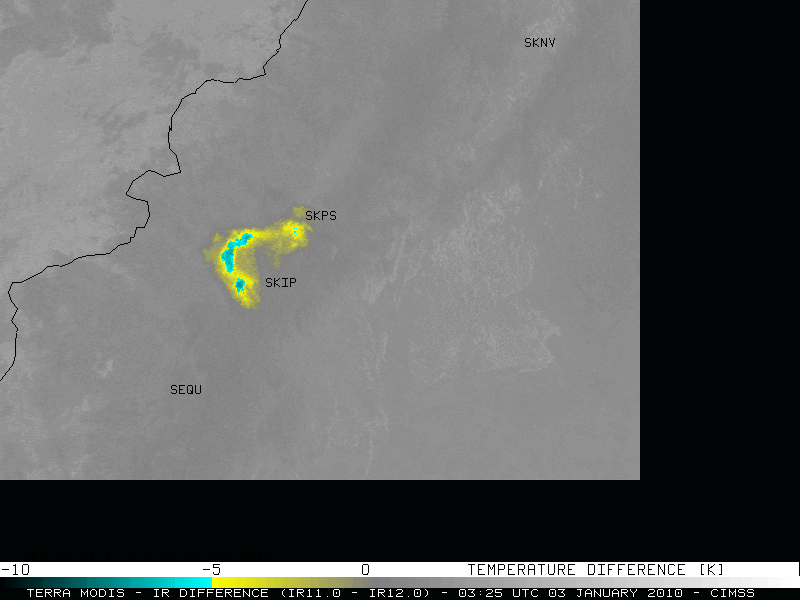Galeras volcano erupts in Colombia
The Galeras volcano in Colombia (located in the Andes Mountains near Colombia’s border with Ecuador) experienced an explosive eruption around 00:43 UTC on 03 January 2010 (Washington VAAC advisory messages). McIDAS images of the GOES-11, GOES-14, and GOES-12 10.7 µm IR (top 3 panels) and 6.7/6.5 µm water vapor channel data (bottom 3 panels) showed the volcanic cloud as it spread outward and drifted to the west for several hours following the eruption.
GOES-11 (GOES-West, positioned at 135º West longitude) only imaged the region once every 3 hours during a full disk scan (in this example, at 00:00, 03:00, and 06:00 UTC). GOES-14 (positioned at 105º West longitude) was emulating GOES-West operations during the final days of its NOAA Science Test, and except for the 3-hourly full disk scans, its imaging area was terminated just to the east of the volcano. GOES-12 (GOES-East, positioned at 75º West longitude) had the best, most consistent view of the South American region.
Note how the signature of the volcanic cloud becomes more difficult to follow on the IR imagery, but is still faintly recognizable for an additional 1-2 hours on the water vapor imagery. The different appearance of the GOES-11 water vapor imagery is due to the fact that the 6.7 µm water vapor channel on GOES-11 is a much “narrower” channel (spectrally) compared to the 6.5 µm water vapor channel on GOES-12 and GOES-14; in addition, the large viewing angle from GOES-11 has shifted the water vapor weighting function to higher (colder) altitudes, making the features appear darker blue to white with this particular water vapor color enhancement.
A simple method for identifying and tracking volcanic ash clouds is the use of a “reverse absorption” or “split window” IR difference product, subtracting the brightness temperature values of the 12.0 µm IR channel from the 10.7 µm IR channel. The GOES-11 IR difference product at 03:00 and 06:00 UTC (above) showed that the volcanic ash cloud had drifted westward over Ipiales (station identifier SKIP) and Pasto (station identifier SKPS) in Colombia, and was moving just to the north of Quito, Ecuador (station identifier SEQU). Note that on the more recent GOES satellites — GOES-12 and beyond — the 12.0 µm IR channel on the Imager instrument has been replaced with a 13.3 µm IR channel, preventing the application of this type of IR difference volcanic ash identification on the more recently-launched GOES satellites.
A corresponding IR difference product using the MODIS 11.0 µm and 12.0 µm channels at 03:25 and 06:25 UTC is shown below. With finer spatial resolution than GOES (1 km, vs 4 km), the edges of the ash cloud feature appear with greater clarity on the MODIS images.




